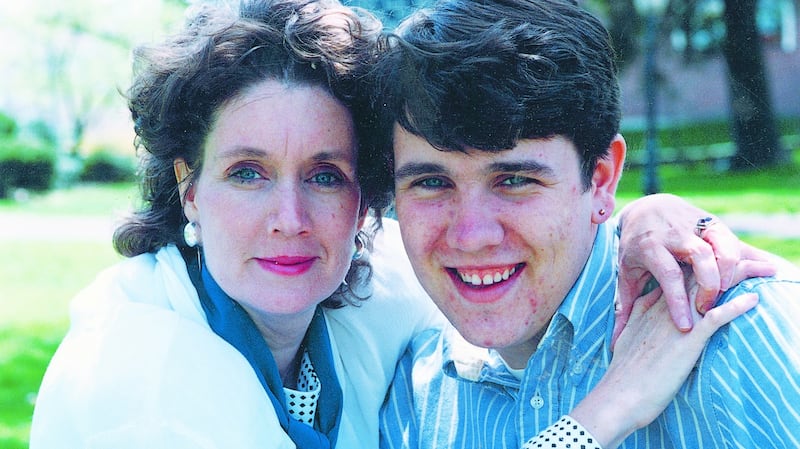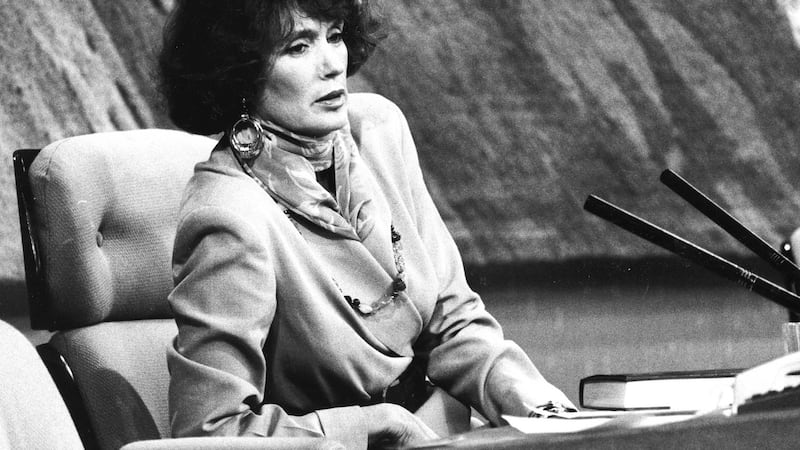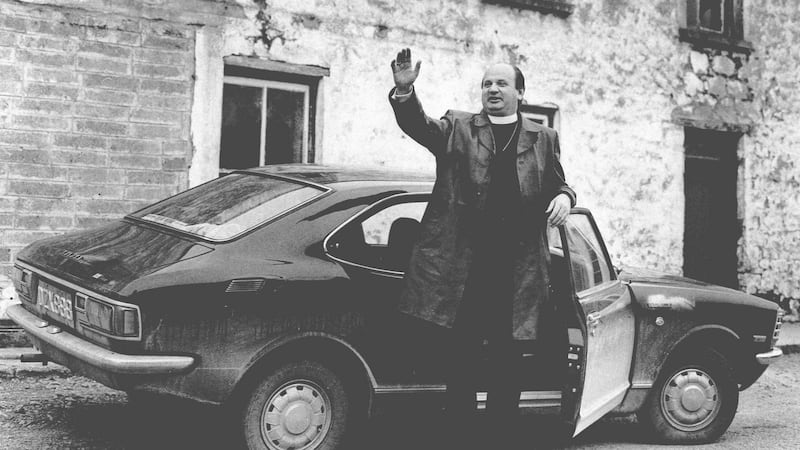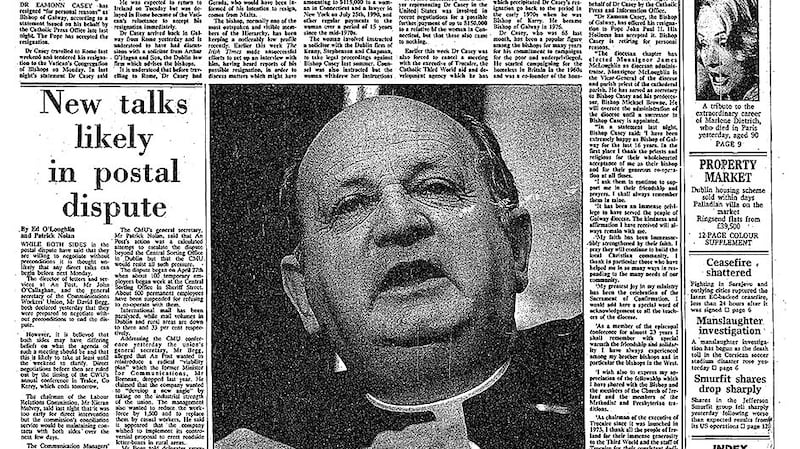The new Bishop of Galway Michael Duignan (51) spoke with disarming frankness at his installation in the Cathedral of Our Lady Assumed into Heaven and St Nicholas near the Salmon Weir Bridge last Sunday.
"We can no longer ignore the fact that much of what the church has built up in Ireland over the last two centuries is crumbling before our eyes," said Duignan, the 13th man to hold the position in Ireland's youngest Catholic diocese.
“Many no longer believe the message. Many of our parishes are struggling,” he said. “Despite great work done by generations of priests, religious and lay people now, at times, it feels like we have been out all night without a single catch.”
Galway holds a key place in the recent history of the Catholic Church since Duignan's predecessor, Eamonn Casey, came to grief 30 years ago after it emerged he had fathered a son, Peter, with American Annie Murphy.
The resignation in disgrace of Casey, though it pales into insignificance with what emerged later, was a pivotal moment. Little was believable before. Everything seemed believable afterwards.
“It was seismic. The Bishop Casey affair! The beginning of the end of trust in mitred men. Eamonn Casey’s big, blustering personality had seemed endearingly chummy to many people,” said former president, Mary McAleese this week.
“He presented as not at all remote or distant like many bishops which made the revelations of his double life, his cover-up, his hypocritical preaching on fidelity and responsibility and family planning all the more galling, all the more difficult to credit,” she went on.
McAleese “had seen his narcissism, his self-obsession at first hand so I knew his public image was not the whole truth. But not in a million years did it ever occur to me just what the whole truth was and how many damaged victims he had so carelessly and easily left in his wake.

“Then came the running away, the finessing of the facts about misusing diocesan money, the emergence of a long-standing pattern of avoidance of responsibility, of hiding behind a facade of entitlement, his sheer practised duplicity.
"Once the facade shattered and with it the facade of his sidekick Mick Cleary, it became easier to be sceptical, to begin to listen to the voices of other victims, to claim the right to challenge clerical power," she said. "It was the beginning of the end of deferential, reverential, trust."
Bishop Duignan’s decision to acknowledge reality so publicly and with no pieties attached is an increasingly common pattern among Ireland’s younger Catholic bishops, dealing, as they now are, with a Church after The Fall.
Speaking at the March 2017 funeral of Eamonn Casey, recently retired Bishop of Galway Brendan Kelly said his predecessor was a man who had done much good but with "hidden realities" that proved "nothing less than earth-shattering".

“We are all sinners, but irresponsibility, infidelity and sin are particularly shocking in the lives of those who preach the Gospel,” Bishop Kelly said in the funeral homily.
Indeed. In 1992 when Casey fell, Ireland was still comparatively innocent, even with realities hiding in plain sight, such as the Magdalene laundry on Dublin’s Sean McDermott Street which did not close until 1996.
This despite the emergence of huge concerns three years earlier after the Sisters of Our Lady of Charity, who also ran the Sean McDermott Street laundry, sold lands at their former laundry in Drumcondra to a developer for £1.5 million.
It meant the exhumation of the remains of 133 women with a further 22 discovered later. All were former workers at the laundry but only 75 death certificates existed for them, despite it being a criminal offence not to register a death.
Back then, of course, no one had yet heard of Tuam and the almost 800 children buried there without trace. Many years would pass before Catherine Corless began her work to remind all that they, too, had once lived.
The Casey resignation began the ending of that silence. His own exposure was heralded by a headline, “Dr Casey resigns as Bishop of Galway” in The Irish Times on May 7th, 1992.

It followed a three-month investigation during which a friendly priest, also a canon lawyer, advised then editor Conor Brady: "If you're wrong or if you can't prove it, the church will destroy The Irish Times."
Within five years a priest would have to be buried at night to escape the wrath of abused Irish Catholics and their relatives when Fr Brendan Smyth was laid to rest at 4.15am in late August 1997 at a graveside in the Cavan countryside.
Seven silhouetted Norbertine priests and a few local people gathered at the graveside with four gardaí standing in the background. The lights from a hearse offered the only illumination as the coffin was lowered into the ground.
In 1991 a Belfast couple had alleged to the RUC that Smyth had abused their four children. He was arrested, but few heard about it then. Released on bail, he went on the run for three years, staying for much of that time across the Border at the Norbertine's Kilnacrott Abbey in Cavan.
The RUC sought his extradition, but it lay untouched in the Dublin attorney general's office for seven months, later prompting a political crisis that led to the November 1994 collapse of the then Fianna Fáil-Labour government.
Earlier in 1994, Smyth was convicted on 43 charges of sexually assaulting the Belfast children and sentenced to four years. A concurrent three-year sentence was later added on another 26 charges.
But what really brought Smyth’s record of decades of child abuse and how this was ignored by his church superiors to public attention was Chris Moore’s programme, Suffer Little Children, broadcast on UTV in October 1994.
On release in 1997 Smyth was immediately rearrested and extradited to the Republic where that July, he was jailed for 12 years after pleading guilty to 74 charges of sexual assault on children over 35 years. A month later he died of a heart attack at the Curragh prison. He was 70.

Among the hidden realities to emerge in his case was the discovery that former Catholic Primate Cardinal Seán Brady had questioned children abused by Smyth in a 1975 inquiry and sworn them to silence.
And it saw the previous Catholic Primate Cardinal Cahal Daly heckled by a Late Late Show audience in November 1995, amid feelings that he had delayed and delayed before Smyth was reported to police.
However, The Fall began with Casey, "the beginning of a bubble bursting, and the fear or promise [depending on one's perspective] that the heretofore elevated clerical world was about to collapse", said Killala priest Fr Brendan Hoban.
Co-founder of the Association of Catholic Priests, he said the effect of the Casey affair had been “that of a grenade thrown into a hitherto unexamined clerical world that placed a question mark over every priest in Ireland”.
“The following Sunday priests scanned their congregations wondering if among their parishioners there was now a suspicion of clerical scandal much closer than they had ever imagined. Could their ‘Father’ be a father?
“Casey’s indiscretion, in comparison with Smyth’s violation of the innocent, soon became for many understandable and forgivable though his apparent neglect of his son wasn’t easily excused,” Hoban declared.
“On the plus side, it brought an air of reality to the lives priests and bishops led, and helped to moderate the pious and wholly unwarranted presumption that the clergy belonged to a different order from the rest of humanity,” he said.
Other voices quickly emerged. In 1995 Andrew Madden was the first survivor to speak publicly about his abuse, in his case by Fr Ivan Payne (since laicised). Others, such as Marie Collins and Colm O'Gorman followed. Credible people, who spoke credibly.
Madden was in London when the Casey story broke in 1992. When he did become aware of it he was “struck by the speed with which Casey was removed, not only from office and his diocese but indeed, the country”.
"I couldn't help comparing that with Ivan Payne being left in Cabra for months after he had admitted sexually abusing me, and then subsequently being moved to another parish by the Dublin Archdiocese," he said.
Years later, it became clear that this was standard Catholic Church practice worldwide.
Soon more such revelations unleashed powerful waves of suffering and emotion across Ireland, so many the result of casual, sometimes merciless cruelties compounded by the indifference of those with power.
In 1996 Christine Buckley and Bernadette Fahy exposed the physical abuse and neglect of children at Dublin's Goldenbridge orphanage in the RTÉ documentary Dear Daughter.
In 1999 Mary Raftery's three-part RTÉ States of Fear series exposed the same in orphanages, industrial schools and reformatories. Before its third part was broadcast in May 1999 then taoiseach Bertie Ahern announced a commission of investigation. It would probe, in the face of struggles and opposition, decades of abuse in religious-run residential institutions for children across the State. Ahern also set in place a redress board to compensate people who had been in those institutions.
In March 2002 the BBC broadcast Suing the Pope, a documentary about the abuse in Ferns diocese of Colm O'Gorman by Fr Seán Fortune. It was re-broadcast on RTÉ and led to the resignation of then Bishop of Ferns Brendan Comiskey, as well as the setting up of the Ferns inquiry.
In October 2002 Mary Raftery’s RTÉ Cardinal Secrets documentary exposed clerical child sexual abuse and cover-up in Dublin’s Catholic archdiocese. By 2004, the Dublin Archdiocese Commission of Investigation was set up.
In time, its remit would be extended to include the Cloyne inquiry, to investigate the handling of clerical sexual abuse of children in that mainly east Cork diocese.
The Ferns report was published in October 2005; the Ryan Commission of Investigation report (named after its chairman Judge Sean Ryan) in May 2009; the Dublin Archdiocese report (known as the Murphy report, after its chairwoman Judge Yvonne Murphy) in November 2009.
This latter prompted the resignations of then Bishop of Kildare and Leighlin Jim Moriarty, then Bishop of Limerick Donal Murray, as well as Dublin auxiliary bishops, Bishop Eamon Walsh and Bishop Ray Field. Pope Benedict XVI declined to accept Walsh and Field's resignations.
Bishop of Cloyne John Magee resigned in March 2010. The Cloyne report was published in July 2011, prompting then taoiseach Enda Kenny's denunciation of the Vatican in the Dáil on July 20th, 2011, accusing it of displaying not compassion but, rather, "the gimlet eye of a Canon lawyer" in dealing with abused children.
Ireland by then had “perhaps” become unshockable, he told a near-empty Dáil in a speech that travelled around the world like few others from that chamber, and certainly few such dealing with the Catholic Church.
Cloyne did shock people, he said, because for the first time “a report on child sexual abuse exposes an attempt by the Holy See to frustrate an inquiry in a sovereign, democratic republic as little as three years ago, not three decades ago”.
The papal nuncio left Ireland soon afterwards and later that year Ireland closed its embassy to the Holy See in Rome. It remained shut for three years. And there was yet more to come.
Prompted by criticism, the Government set up an inquiry into the Magdalene laundries. It reported in 2013 and later that year a compensation scheme was set up for women who had been in the laundries.
Then in 2015, following the work of Catherine Corless in Tuam, the Commission of Investigation into Mother and Baby Homes was set up. It reported in January 2021, to a storm of controversy.
Reflecting on the 30 years, Bishop Duignan last Sunday said “much of what the church has built up in Ireland over the last two centuries is crumbling before our eyes”.
Few would argue today that it is not a deserved fate for an institution which had lost its way. Yet in the long history of Christianity in Ireland this model of Church is a recent phenomenon, a mere blip, lasting just 150 years out of the 1,590 that have passed since the arrival of St Patrick in 432AD.
Built in the second half of the 19th century on foundations laid by Cardinal Paul Cullen, it became all-powerful 100 years ago when the British left, leaving it in control of most of of the education and health services that did exist.
Helped by “the most conservative-minded revolutionaries that ever put through a successful revolution” – as self-described in 1923 by one of their number, Kevin O’Higgins – it set about creating a Catholic state for a Catholic people.
Its demise began 30 years ago today.










